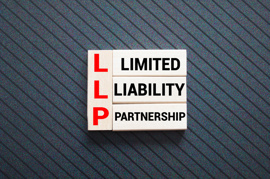Let's begin with some interesting data—in England and Wales, there are approximately 170,700 registered charities as of January 2025, and countless micro charities that do not qualify to register due to their income being so small. If an organisation has a charitable purpose, has an annual income of £5,000 or more and is either a company, trust or unincorporated organisation then it must register with the Charity Commission. Once registered with the Charity Commission the charity becomes a registered charity and will appear on the register of charities.
Charities vs Not-for-Profit organisations—is there a difference?
As defined by HMRC, there should be a clear distinction between Charities and Not-for-Profit organisations. While all Charities are non-profit making organisations, not all non-profit making organisations will fall within the definition of a Charity for tax purposes as well as whether the organisation is eligible to register as a charity with the Charity Commission.
Not-for-profit organisation are all independent organisations whose purpose is something other than to make profit for shareholders, directors or members. There are many types of organisations that can be classified as 'not-for-profit' as this is not a legal structure.
What exactly defines a charity?
The basic definition of a charity is an organisation registered with the Charity Commission that exists for the public benefit and operates exclusively for charitable purposes. It is important to note that in order to register with the Charity Commission, an organisation has to meet the following criteria:
- The organisation must be established for a charitable purpose, therefore, for the benefit of the public,
- The organisation must be subject to the High Court’s charity law jurisdiction.
Charities may have a membership structure so that the members can derive some benefits. However, usually it is a case of the body of members coming together to support work which is of benefit to the wider community. If an organisation exists only for the benefit of its members, it is not considered a charity. If an organisation has a mixture of charitable and non-charitable activities, it will not meet the legal definition of a charity.
Small Charities
There are different views on what the definition of a small charity is. For example, the Small Charities Coalition defines small charities as those with an annual income under £1m—making up 97% of all charities. On the other side, the The National Council for Voluntary Organisations has a more specific definition of charities' sizes:
Micro charities - those with total income under £10,000;
Small charities - those with income of £10,000 to £100,000;
Medium charities - those with income of £100,000 to £1 million
Large charities - those with income of above £1 million
Charity structures
There are different types of charity structures and what an organisation chooses will depend on many factors, but there are four main charity structures.
a) Charitable Company (Limited by Guarantee)
If a charity is a charitable limited company, it has to be registered with both Companies House and the Charity Commission. This structure gives the freedom of owning property and trading with third parties without the need of Trustees, however, under this structure the charity is liable for its own debts. It has its own legal existence, meaning that it can enter into contracts, have debts and obligations in its own right.
b) Charitable Incorporated Organisation (CIO)
Charitable incorporated organisations can be membership organisations, which are only regulated by the Charity Commission, rather than Companies House. One of the main advantages of being a CIO is that trustees benefit from limited liability protection, which means they will not be personally liable if the charity falls into financial difficulty. It must register with the Charity Commission as soon as it is set up, as a CIO does not officially exist until registered.
c) Charitable Trust
There are many different types of trusts, however, the main explanation is that a charitable trust is where a group of assets are assigned to a trustee or a board of trustees who control and use the assets to support charitable activities. Trusts cannot enter into contracts or own property and their trustees are personally responsible for the trust' liabilities.
d) Unincorporated Association
An unincorporated association is made of group of people who work together for the benefit of the public, but are not in a formal structure like a charity or a company. Examples of unincorporated associations are non-for-profit clubs and community groups.
What is a Not-for-Profit Organisation?
Not-for-profit organisations are not run for the financial gains of their directors, opposed to an entity that operates to generate profits for its owners. Instead, not-for-profit organisations aim to provide a public service or help the community. A not-for profit organisation can legally make profit, but it has to be reinvested back into the organisation to fund its purpose or mission. Examples of not-for-profit organisations include Community sports clubs, well-being organisation and scientific organisation.
What about corporation tax—are charities taxed?
Generally speaking, charities are exempt from paying corporation tax on most types of income as long as they use the money for charitable purposes. But in order to benefit from tax relief, the charity has to be recognised by HMRC.
Charities will not pay tax on profits made from trade if one of the following is satisfied:
a) Income will be allocated for the charity’s objectives – ‘primary purpose trading’
What is meant by ‘primary purpose trading’?
Usually, the primary purpose of a charity is stated in its governing document, yet there is no limit to the number of primary purpose trading that a charity can engage in. To illustrate, a cinema charity can charge for tickets, provided that this activity contributes directly to one or if applicable more of the primary purpose set in the governing document. As a consequence, the profits made will be exempt from Corporation tax, or Income tax in the case of charitable trusts.
What is ‘non-primary purpose trading’?
Charity law allows engaging in non-primary purpose trading so as to raise funds, as long as that the charity’s assets are not exposed to significant risk. Moreover, if turnover from this type is below the small trading tax exemption limit, then this charity will not be liable to pay Corporation tax.
b) The level of trade that is not primary purpose is below the charity’s small trading tax exemption limit
What is the small trading tax exemption?
If there is a trading activity that does not relate to the charity’s primary purpose, an exemption can be claimed if turnover is below the small trading tax exemption limit. If trading turnover is higher than the limit, then corporation tax must be paid on all of your profits from that trade.
| Gross annual income = Total turnover before tax and expenses | Maximum small trading turnover |
| Under £32,000 | £8,000 |
| £32,001 to £320,000 | 25% of charity’s total annual turnover |
| Over £320,000 | £80,000 |
c) The charity trades through a subsidiary company
Using a subsidiary trading company could be beneficial if one or more charities set up a subsidiary company to trade on their behalf if:
- The profits made are not linked to the primary purpose
- Profit made is close or higher than the tax exemption limit
- Wants to protect its assets from trading losses
- Wants to have a separate business for its trading activities
What are charities’ reporting requirements?
A charity’s annual reporting obligations will depend on many factors such as; is the charity also a company (registered with Companies House), what the charity’s gross income is, the charity’s assets value and is the charity of a size that is required to be registered with the Charity Commission. If a charity’s income is more than £5,000 per year, it must register with the Charity Commission.
All registered charities (irrespective of income) must file with the Charity Commission the following documents:
- An annual return
- Annual accounts
- A trustee’s annual report
The Annual report and annual accounts must be filed within 10 months of the end of the charity’s financial year.
What about VAT?
Charities are not exempt from VAT, but are eligible for reliefs. They pay VAT on all standard-rated goods and services, bought from VAT-registered businesses. Moreover, VAT is paid at a reduced rate of 5% or at zero rate on some goods and services.
Charities do not pay VAT on goods imported from outside the UK, as long as they are benefiting people in need by providing:
- Goods to be used or sold at charity events
- Basic necessities
- Equipment and office materials to help run your organisation for the benefit of people in need.























